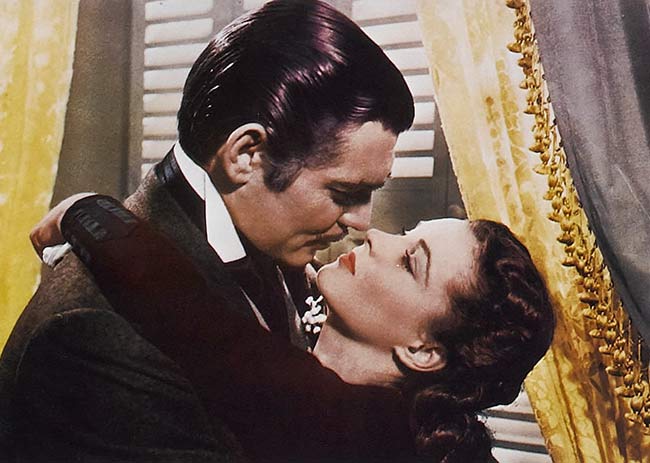A Writer’s Guide to the Romantasy Genre
Today’s guest post is by Alexa Nazzaro and Lucien Schraeder.
By now, you’ve likely heard of Romantasy – a currently trending topic in online reader communities. This genre has captivated the readers and authors alike in online book communities such as Booktok (Book Tiktok), Bookstagram (Book Instagram), and Booktube (Book YouTube).
Romantasy is an emerging subgenre in new adult fiction, combining elements of high-fantasy with romance. Since the term was first coined, Romantasy has quickly gained popularity, even appearing as a new genre in the 2023 Goodreads Choice Awards.
What differentiates it from similar genres, such as Fantasy Romance? Romantasy novels can be set in either High Fantasy or Low Fantasy settings. High Fantasy fiction takes place in another realm, transporting the reader to an epic world often populated by mythical creatures and magic. Conversely, Low Fantasy novels are set in our world, which is disrupted by the appearance of fantastic beings and external magical forces that encroach upon this realm.
Romantasy diverges from Fantasy Romance most notably in the integral role that romance plays in the plot—in Fantasy Romance, the romance is often a subplot, and the story could stand alone were it to be removed, while in Romantasy, romance is a central element to the story, contributing to a majority of the conflict and plot events.
What’s behind the rising popularity of Romantasy fiction, and why has it quickly become one of the most-searched terms on platforms?
A huge contributor to the rise of Romantasy is this genre’s delivery of respite from reality. Most readers seek out stories as a source of comfort, distraction from everyday life, or to explore worlds outside of their own. With the endless stream of devastating world events and the stress of modern society, many fiction lovers find themselves looking for escapism in the pages of novels. Combining hope in the face of adversity with sweeping romance, the fantasy of escapism has become a trademark of this genre.
Notably, Romantasy is primarily written by women authors, marking a departure from the historically male-dominated fantasy literature. Popular examples from the Romantasy genre include authors such as Sarah J. Maas, author of A Court of Thorns and Roses series, and Rebecca Yarros, author of Fourth Wing.
In both stories, the narrative revolves around the protagonist’s romantic storyline, while simultaneously navigating the high-stakes world of epic fantasy in which the novels take place.
Diverging from the male-dominated Fantasy epics from the likes of J.R.R. Tolkien, G.R.R. Martin, Romantasy novels often feature a female protagonist whose agency is an inherent aspect to their story arc. While it undeniably has roots in the classic Fantasy genre, Romantasy offers a fresh perspective.
Romantasy Tropes
So, what do you need to know as an aspiring writer of Romantasy? Here are some common characteristics and tropes that mark the Romantasy genre:
Enemies to Lovers
This classic trope involves two characters who start off hating each other – whether they’re rivals or members of opposing groups. Readers witness the evolution of their relationship as enmity turns to attraction. In these romances, both characters see the other as an equal, formidable opponent, yet find themselves helplessly drawn toward each other.
Many readers are compelled by this aspect of Romantasy, where the pairing’s irresistible allure offers an intoxicating exploration of conflict surrounding priorities, misconceptions, and overcoming differences.
Fated Romance
In many Romantasy narratives, the obstacles separating prospective lovers offer a key source of tension. The story of the ‘star-crossed lovers’ is a timeless one, resonating across centuries—from Shakespeare’s Romeo and Juliet to Julie Kagawa’s The Iron King, in which the heroine is forced to choose between fealty to the faerie court she was born into, and the entrancing prince of the rival court who captures her heart. These forbidden relationships give readers something to root for, drawing out the suspense through the impossible challenges the lead couple faces as they must fight for each other.
Non-Human Love Interests
In Throne of the Fallen by Kerri Maniscalco, the main character Camilla makes a bargain with a devil—the Prince of Envy himself, the eponymous deadly sin made manifest. Demons, vampires, faeries, and otherworldly beings populate the pages of Romantasy fiction, offering an array of romantic prospects.
These leading love interests offer possibilities beyond mundane ordinary life, with romances that defy conventions. These relationships often transgress societal norms, with some stories featuring redemption arcs in which the protagonist’s faith and commitment leads to their partner’s transformative growth.
Other storylines examine themes of acceptance and understanding. These non-human romances contribute to the genre’s strong ability to resonate with readers through the use of these misunderstood love interests as metaphors for marginalized identities and experiences. Whether readers crave a descent into dark, demonic devotion, or a passionate courtly affair with a faerie prince, Romantasy delivers endless options.
Tips for Writers
Aspiring writers of Romantasy fiction can navigate this genre by incorporating these themes and tropes into their own story! Here are some additional tips for writing your Romantasy novel:
Go Wild with World-Building
Just because you’re writing a romance-centric novel doesn’t mean you have to neglect world building. Immerse yourself in the fantasy setting you create! Consider societal and cultural aspects as well as magic systems, language, lore, and religion! As you brainstorm, take note of how these factors will impact your Romantasy storyline and provide a vibrant backdrop to add complexity to your romance arc.
Explore the Forbidden
One of the most compelling aspects of the Romantasy genre is how it breaks from traditional fantasy novels. Don’t limit yourself only to depicting good vs. evil—many Romantasy books dabble in morally gray main characters, and dark or taboo themes that other genres shy away from. Experiment with a non-human love interest (or protagonist!), ambiguous and unreliable narrators, or main characters who aren’t constrained by being fundamentally “good.”
Give Your Protagonist Agency
While Romantasy often positions romance as a central plot device, don’t make the mistake of assuming this genre is solely populated by damsels in distress! In the 2023 Goodreads Choice Awards, novels listed in the Romantasy category feature a diverse array of protagonists, from the dragon-riders of Rebecca Yarros’ Fourth Wing to a girl cursed with the power to instill terror in Charlie N. Holmberg’s The Hanging City.
These powerful heroines seize control of their stories with their own hands, entrancing readers as they defy all obstacles.
When writing your story, consider what traits you find make a protagonist most compelling, and weave these into your character creation, to craft a narrative populated with formidable characters of your own!
Now you’re armed with a deeper knowledge of the Romantasy genre, why it resonates so strongly with readers, and tropes and tips when writing Romantasy yourself, it’s time to go forth and create! By incorporating narrative elements like enemies to lovers, fated romance, and non-human love interests, you can weave a commentary on moral ambiguity and personal agency, offering your readers an epic escape into a fantasy world apart from our own.

Alexa Nazzaro founded the Aaxel Author Group in 2015, providing turnkey publishing services for writers. She has nearly twenty years of marketing and communications experience. Alexa helps authors take control of their publishing experience, exploring all genres—from memoir, to children’s books, to coffee table books, journals, and more.
Lucien Schraeder is a writer and editor specializing in marketing and client care for the Aaxel Author Group.
Featured Image by Chan Factory from Pixabay






